The Industrial School for Girls operated out of 868 Cassiar Street from 1914 until 1959 and was known as the “house of horror.” Now a residential condo, Cassiar is one of the properties featured on this year’s virtual Heritage House Tour, Thursday June 2. For tickets see: Vancouver Heritage Foundation
This story is from Vancouver Exposed: Searching for the City’s Hidden History
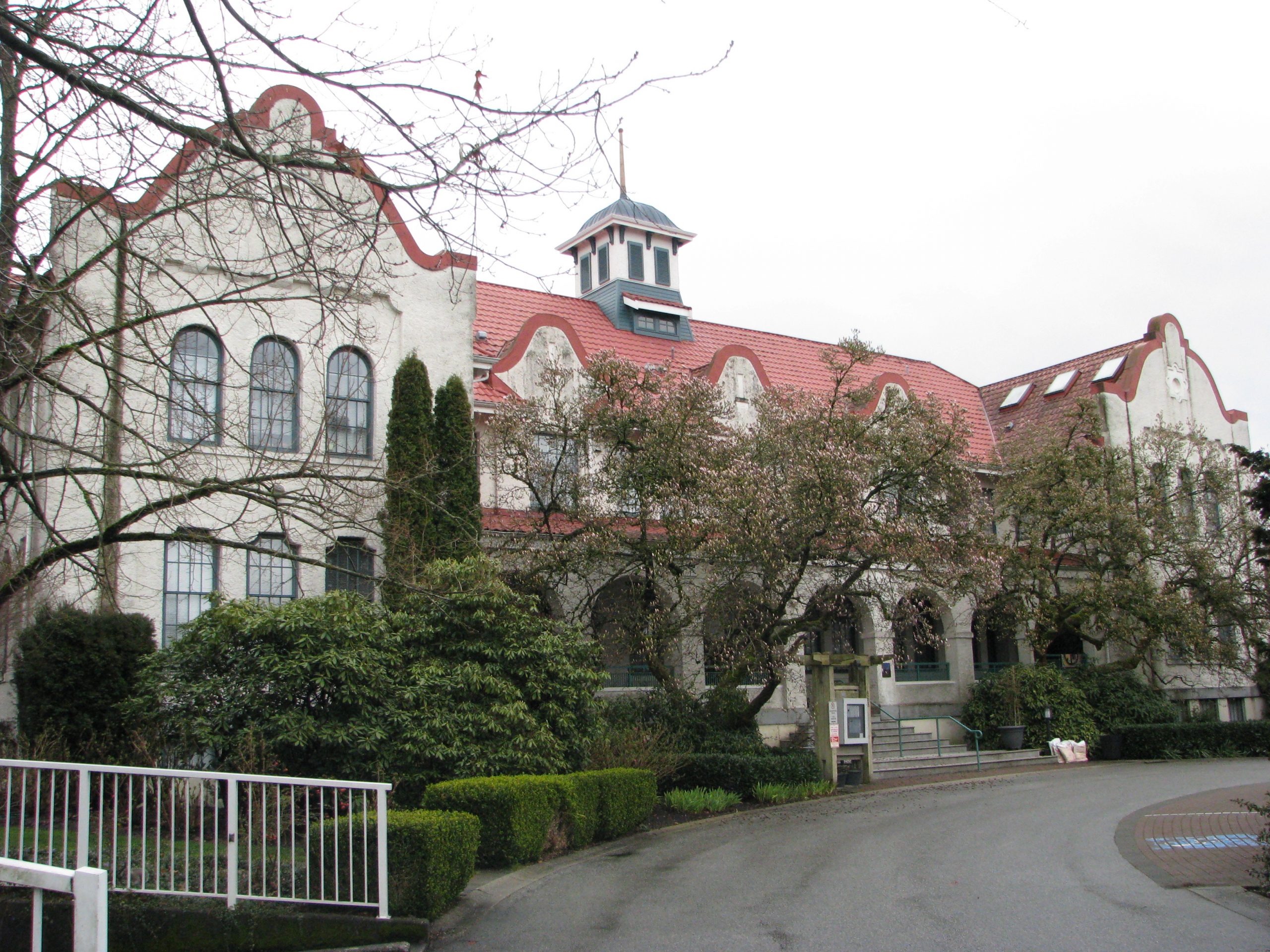
In 1954, 17-year-old Gay Turner was tossed into the Provincial Industrial School for Girls for being drunk. On her first day she was taken to the superintendent’s office and told to shut her mouth, behave herself and take a hairdressing course. The next day she escaped with another girl. “We got drunk and we got caught and we got brought back,” she told me.
New Year’s Eve 1954:
It was New Year’s Eve, and she was locked in the cupola on the roof by herself. “I remember crying and listening to all of Vancouver and I could hear the bells and I heard people yelling ‘Happy New Year’ everywhere.”
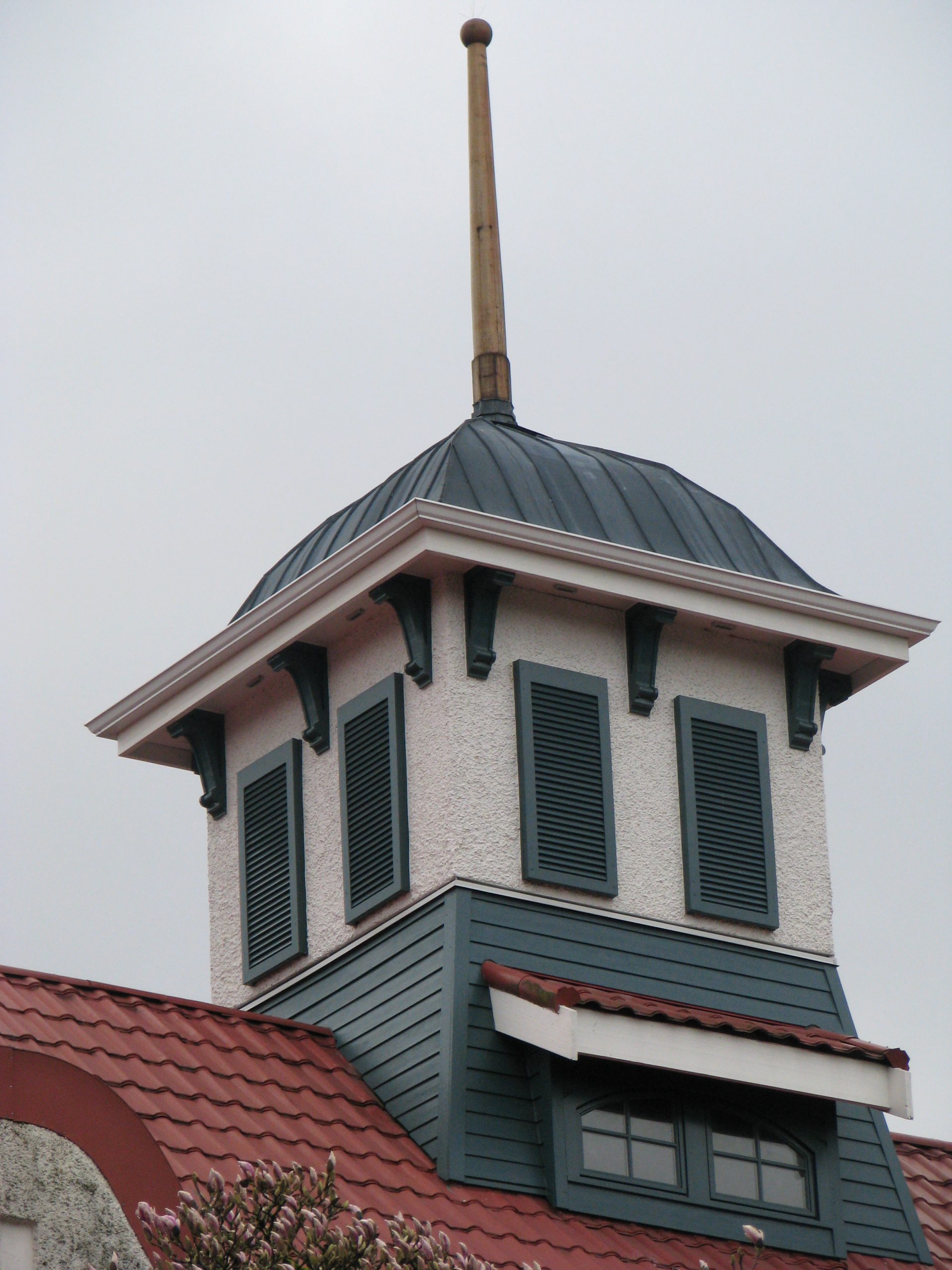
Gay broke one of the panes of glass and slashed at her wrists. The damage was minimal, but she was thrown in the “hole” in the basement. A girl started yelling and others joined in. Soon they were breaking windows and making a lot of noise. “And you know what they did on a winter evening in these unheated cells? They used firehoses, real firehoses,” she says. “One girl was soaked down and left all night and ended up with pneumonia. An ambulance came for her the next day.”
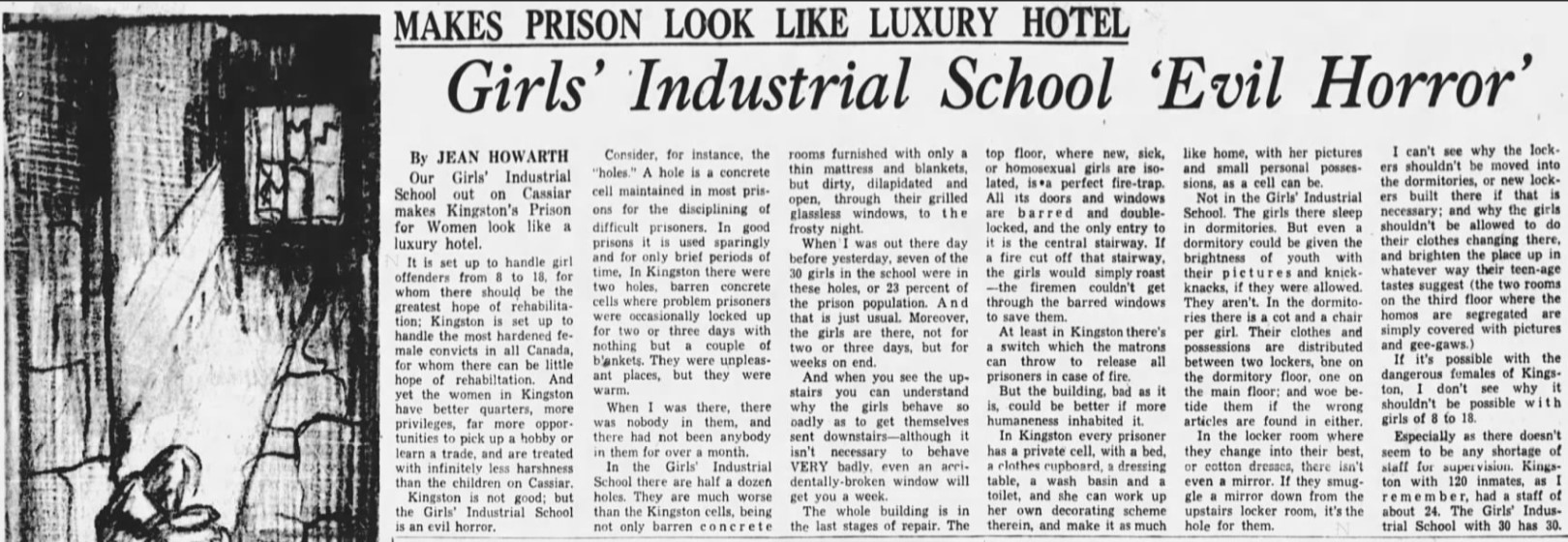
evil horror:
Gay freely admits to being a teenage alcoholic. It was a common offence of the inmates, but so was running away from a violent home, being an orphan or being Indigenous when the residential schools overfilled. The minimum sentence was six months, and the girls ranged in age from eight to 18. She was luckier than most. A sponsor from Alcoholics Anonymous helped get her transferred to Oakalla Prison. “I was ten times better treated,” she says. “I could rave about people who ran that place. I saw some humanity.” Gay spent four months there.
The Provincial Industrial School for Girls opened in 1914 for “the education, industrial training and moral reclamation” of girls under 16 convicted of an offence punishable by imprisonment. The building was surrounded by 14 acres and located on the outskirts of the city in Hastings townsite. By 1918 it was walled up with a six-foot-high fence.
In November 1954, the month before Gay was incarcerated, a report was issued to the provincial health minister. It told of dungeon-like cells with girls sleeping on mattresses and blankets tossed on damp floors. The report noted that all prisoners were lumped together: runaways, prostitutes, those with addictions, mental illness and cognitive disabilities.
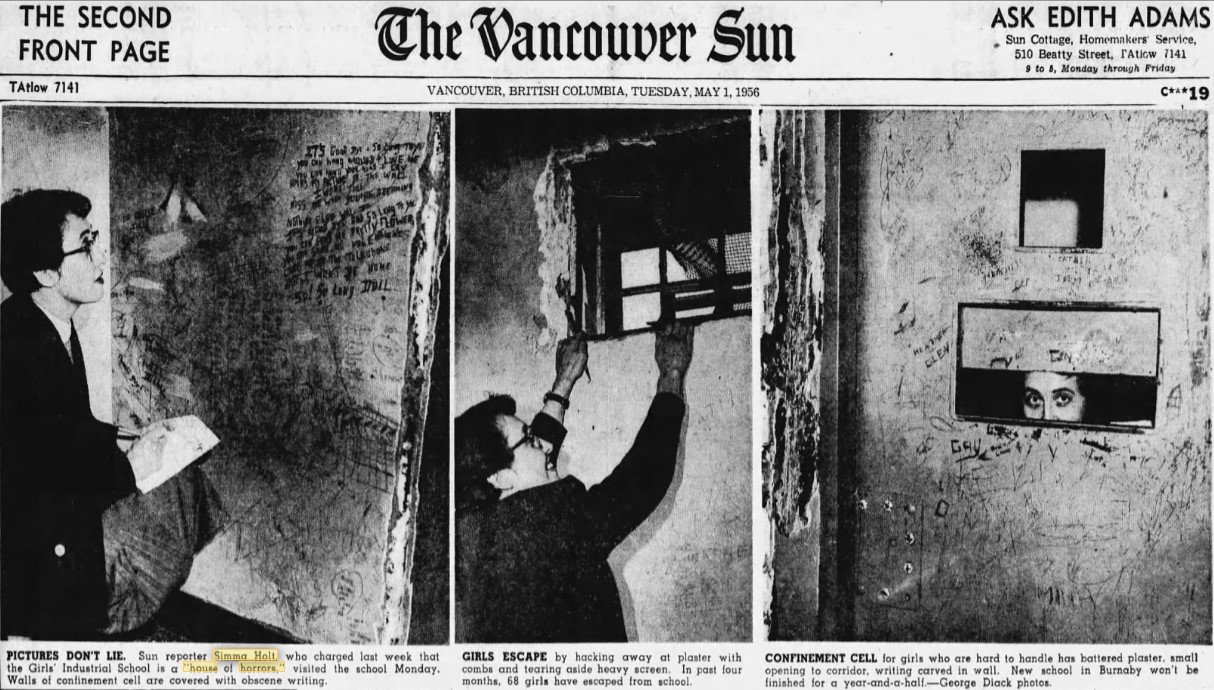
Makes Kingston Prison look like a luxury hotel:
“Our Girls’ Industrial School makes Kingston’s prison for women look like a luxury hotel,” wrote Province reporter Jean Howarth in 1954. “The women at Kingston have better quarters, more privileges, far more opportunities to pick up a hobby or learn a trade and are treated with infinitely less harshness than the children on Cassiar. Kingston is not good; but the Girls Industrial School is an evil horror.”
Two years later, nothing had changed and the Vancouver Sun’s Simma Holt reported on the school. She called it “a house of horror.”
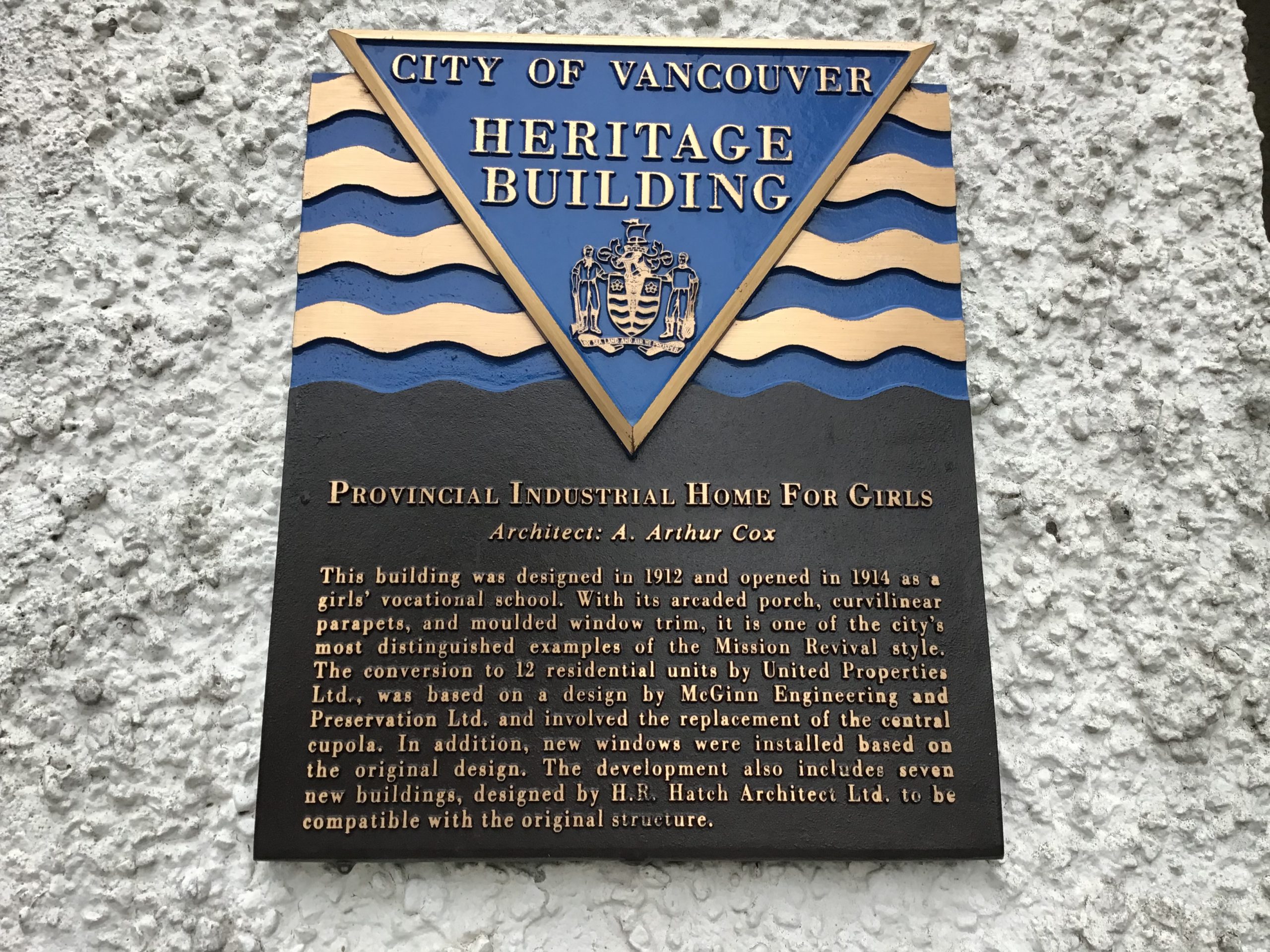
The Cassiar Street institution closed in 1959, after 45 years of operation and the girls were moved to a new building on Willington Avenue in Burnaby. The Cassiar facility was used for provincial government offices until 1995, when it was converted into 12 residential units and surrounded by a 76-unit townhouse development.
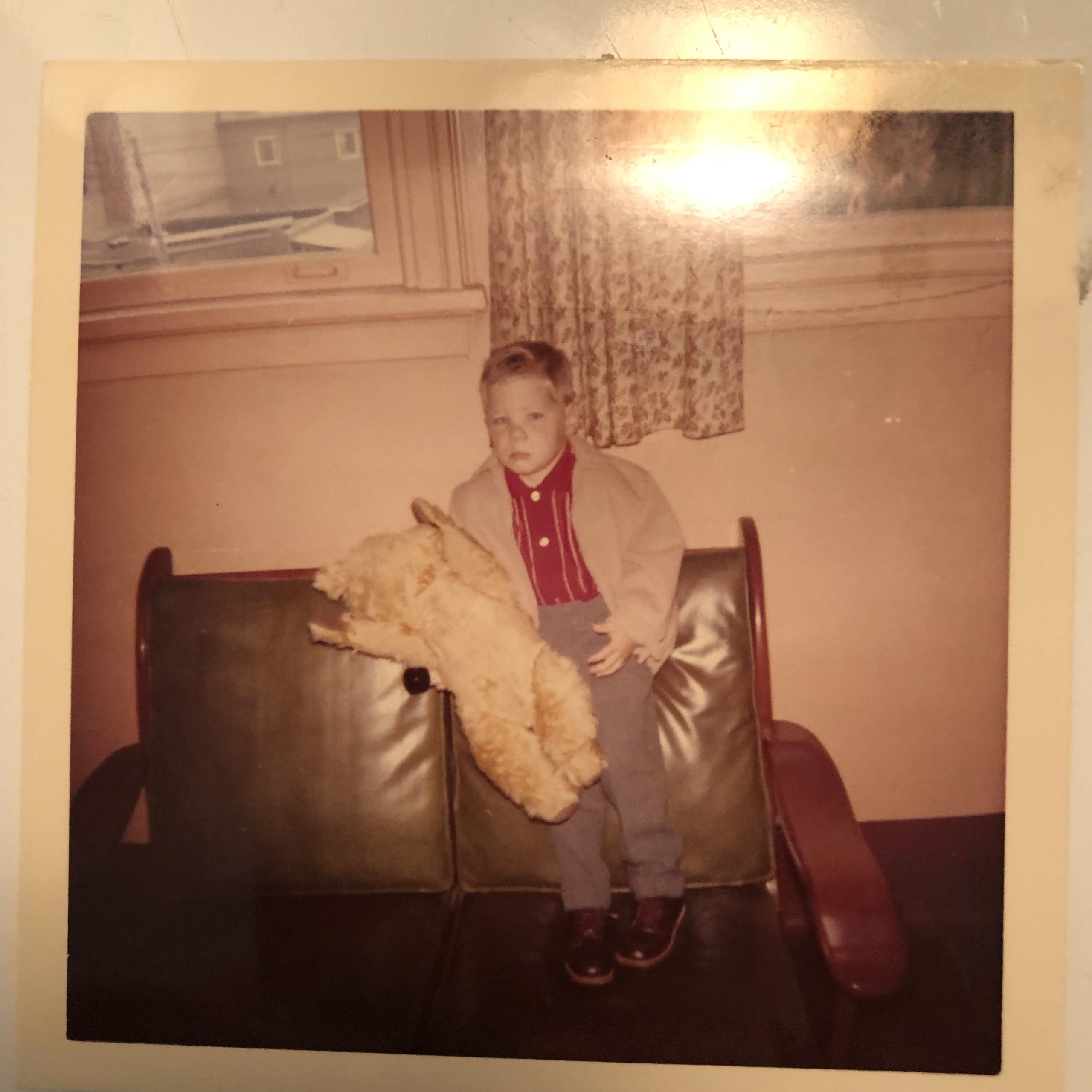
Now a great grandmother, Gay and has been sober since 1992.
© Eve Lazarus, 2022




21 comments on “The Industrial School for Girls”
Thank goodness for reporters! They should run for office. They would have the humanity so often lacking in our politicians. I remember the name Simma Holt as a newspaper reporter even though I was just a kid at the time. She must have been very good at her job.
She was an amazing reporter and elected as an MP in Trudeau’s government in the 1970s!
Simma Holt was an amazing reporter. I remember her writing about the Doukhobors. She explained about their history so we could understand more about what was happening with them. I was just a teenager at the time.
Reporter Sima Holt became a very successful politician.
When I was very young I remember my mom stating if I was bad I would go to the bad girls home. At that time we really did not understand what this institution was.
Jaw dropping account, straight out of the pages of Dickens, “Are there no workhouses? Are there no prisons?”…
Thank you for your reporting Eve. It is unbelievable that people were treated like this.
We looked at one of the strata units for sale in the summer of 2016. It certainly had a lot of “character” but we would have needed to spend another big whack of dollars to make it suit our needs. Upgrading plumbing and electrical in concrete and brick walls ain’t easy.
The trauma these girls experienced probably manifested itself in drug addiction, alcoholism or worse, opening them to stigma, shame, depression and death.
Thanks for the story. It’s strange but no dark atmosphere remained in the building itself, which I worked in for a few years around 1992 to 93 or so. Before being stratified for condos, the structure in its final public role housed the staff training centre for Ministry of Social Services & Housing. It was one of the most pleasant buildings I worked in during all my decades of office work, there was a convivial and positive atmosphere among the people working there and the building itself seemed to contribute to that. I still remember the unique luxury of being able to open a window beside my desk in the admin area and breathe fresh spring air.
I did not know about this place when I was growing up in Vancouver. I had heard of reform schools for boys but not for girls. I certainly would not want to live in that building because of what happened to those girls there. Thank you, Eve, for opening our eyes about how young people were treated here in the past.
I hope that the little guy, Patrick, has had a good life so far…
You read my mind. I was wondering the same. Hopefully he wasn’t adopted out because his mom was sent to reform school for 6 months. Imagine being released to no future…
I worked in that building when it was a training centre for Ministry of Social Services and Housing. Glad I didn’t have a thorough knowledge of it’s history then. Absolutely deplorable!
After 1959 wasn’t it used for juvenile girls detention? I’m sure I was in there in 1967 at age 17 for riding around late at night in a car that had marijuana under the back seat.
You were most likely at Willingdon
I live in this building now. It’s filled with nice people and young families. Two mornings a week I play on the floor of my condo with my granddaughter and have hosted many house concerts. It doesn’t erase the bad things, but it’s wonderful that it’s taken a new direction
I remember hearing stories about this “school” when I was very small, and how Willingdon YDC was supposed to be more modern and humane. And yet…https://burnabybeacon.com/article/class-action-willingdon-school-province/. In later life I taught yoga to some of the girls who were getting ready to be released from Willingdon, and oh, my, the impact upon them was awful. Institutional trauma overtop of adverse childhood event trauma in nearly every girl.
It has been with great interest that I have read through your blog, and I am pleased that I came across your story of the industrial school for girls. Last year I moved out of one of the condos I had purchased there in the late nineties. Somebody told me that what is now known as Terra Vita Place had been a school for bad girls, but it was told with a smile so I had my doubts as to its veracity. Your stories about Vancouver’s past are fascinating; I particularly like your article and photos of Fred Herzog in person. Photography is a hobby for me as well, and for the last two years, I have been extensively photographing in downtown Vancouver, trying to photograph things which I think will disappear in the next decade. Concerning the stucco building above, I went all around the property for a couple of days, photographing the building from different angles, and now have one of them as a “glue-on” photo on the front of my fridge. It is a reminder of where I spent part of my life, but from now on, I will look at the image very differently. Your stories and images help us understand the city of Vancouver. Thank you.
My grandmother was sent to a girls’ home in Vancouver when she was 14 in 1943. While there she had a daughter who was placed up for adoption as the family in Quesnel refused to take the baby. My grandmother returned to Quesnel and the baby was fostered several times before being taken in by Children’s Aid and adopted out. My aunt remembered a building on Cassiar near Hastings street and I wonder if it was this one.
In her own words:
“Now you said [M]other was sent down from 100 [M]ile [H]ouse to live out her pregnancy in an unwed mother’s home in Vancouver at Cassiar and Hastings street. When I was down on the coast a number of yrs ago visiting a family who had been a second family to me I described to her a bldg. with a walk down from the front door through the grass to the street with park benches on each side of the walk and lovely green grass. It had a big copper colored iron door with bars on it and on the windows. Inside the front door was a shiny brown colored sort of brick floor. She said to me I know the bldg come with me and we will go for a drive and we went down and saw the bldg at Cassiar and Hastings street. It was the same bldg I had remembered. It was now converted into a senior citizens home and a driveway at the front and the bars gone. So I had remembered that bldg since I was 2 yrs old. It was a girls home for unwed mothers and ones that had gotten into trouble with the law. So I may have been born there or in the hospital as you said.”
Your poor grandmother! It would not have been this house though, it was an industrial school from 1914 to around 1959 then was turned into government offices. I looked into the “baby scoop” a bit when I was writing Cold Case Vancouver – specifically a chapter about Jennie Conroy, a 24-year-old unmarried mother in North Vancouver in 1944. She was a shipyards worker and managed to save enough to last through her pregnancy, hide it from her family and adopt her baby girl. When she was murdered 3 months later, she was basically blamed for it in the media and by police. There were two homes in Vancouver and one in Burnaby as I recall, and run by the churches. Almost all of these young women had their babies adopted whether they wanted to or not.